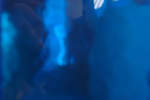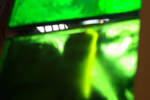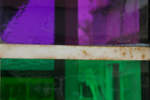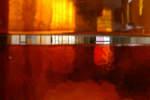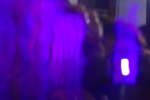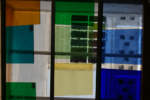“The way we experience colour is a question of culture. Just as senses and perception are linked to memories and identification, our relationship with colour is solidly rooted in our cultural habitat. The Eskimos have a single word to define red, but they have thirty for white…” observes Olafur Eliasson, a Danish artist who is familiar with the sophisticated and intangible Nordic chromatic variations.
In his “Art of Colour” from 1961 Johannes Itten writes, as conclusion of his studies on the perception of colour: “Chromatic effects can be controlled through visual perception. But I admit that the deepest and most essential secrets of colours remain impenetrable to the eye, and can only be captured with the heart. The essential therefore escapes every conceptual formulation.” I am very fond of this quite romantic vision of colour, the elusive soul of colour, often unpredictable, that cannot be captured, a matter of the heart rather than of the brain. The present-day advocates of scientific methods for decoding, understanding and then designing colour on a theoretical level have never wholly convinced me.
At least if we are to judge from the resulting designs, these methods seldom give surprising and memorable results!
My experience with colour is multiform and transversal, because it concerns numerous materials, and throughout my professional trajectory.
My education as an architect, with the relative studies on colour, surface and volumes has been followed by professional experiences with many manufacturers of products where the colour plays a fundamental role and is a key factor to commercial success. My career has developed over the years, with the creation of an infinity of colour palettes for companies producing materials for the furniture sector: from the textile industry, as Parà Tempotest, to the ceramic industry with experimentation with coloured fired terracotta for the Terre Toscane Group – Ferrone, Ceramiche Brunelleschi, Rasseno in the Nineties, and more recently with Terreblu, and glass products made with every technique, from designs in blown glass from Murano for Carlo Moretti and Barovier&Toso, to the industrially produced glass of Saint Gobain Glass, glass has become the leitmotif of my work. A pliant material par excellence, glass still surprises me, and offers me many opportunities to experiment. In 2011 the Museum of Glass Art of Altare, in the interior near Savona, dedicated an exhibition to my glass and colour designs. The Museum today bears witness to the concluded history of a glorious past: for hundreds of years Altare was the leading production site of industrial glass in Italy – Bormioli is by the way one of the oldest names of the glassmakers of Altare, who have then emigrated to another region. I have chosen to work with the master glassmakers who still keep this great tradition alive, with a colour that is difficult both for glass and other materials, especially ceramics, namely red, so elusive, ‘capricious’ and unpredictable, so hard to control and dominate… perhaps, as an old master of Murano told me, “it is because one is dealing with fire, and fire, which is red, does not want any rivals…”
Be that as it may, red is always a daunting challenge for those who work with colours, and the result can never be taken for granted. Some of the story about my parallel research on colour in the context of industrial products has been told in 2008, with the book “The colours of design. The design of colour as a factor of success of industrial products”, published by FrancoAngeli. It recounts 7 ‘case histories’, stories of industrial products and how colour has played an essential role, making it possible to emerge in a crowded scenario where it is becoming harder and harder for images to be visible and memorable. In all industrial products colour design is always intrinsically linked to the nature of the material and the study of the surface treatment: these three elements are inseparably and closely correlated to the typology and form of the object, and they contribute to the final perceptive and tactile effect. The story about the seven projects is told through interviews of those who have been involved in the colour project. Alessi and the so-called ‘transversal colour’, the research conducted over the years by colour designer Claudia Raimondo on household items in steel, linked to the reflection of the material and the effect of the interaction with the light, not only on the colour but also on the surface treatment of the material; the story of the colours of the products made by Bticino, a company which has succeeded in turning a small technical accessory, the plate of electrical switches and sockets, into an interior architecture accessory in which form, surface treatment and colour are closely correlated; the study of the colour range used in the redesign of the new version of the Fiat 500: a mix of vintage colours evoking the past, as the ivory of the first cinquecento ever produced, reinterpreted in a contemporary key, and new colours aimed at conquering a the young customers who have heard of the past but have no direct experience; the extraordinary colour range of Lualdi doors, the ‘classical’ evergreens – from ‘Ferrari’ red to carriage red, from prune to anthracite grey, which were studied by architect Luigi Caccia Dominioni in the Seventies and are still international bestsellers today; the so-called ‘sherbet colours’ of the plastic chairs designed by Jasper Morrison produced by Magis: the technical difficulties associated with producing pretty dark colours has become a new opportunity, through the creation of a range of pastel colours which have proven a successful innovation; the ‘transformist’ colours of fashion accessories – Piquadro bags and suitcases – and the ability to make a colour, the Pantone 298C blue found in the details of every product by Piquadro, become the distinctive design trait of the brand; the research of a non-colour, the absolute white, also called ‘extra-white’, for glass used in architecture, a trend that has by now become consolidated, and used by contemporary architects all over the world in recent years.
In the history of contemporary industrial products of great success we cannot but mention the famous case of Apple: in the dreary scenario of grey and beige computers, one day Apple amazed the world by introducing the Bondi Blue iMac in 1998. As Louis Gray wrote in Commentary on 28 December 2006 “… and the world was caught with its figurative ‘pants down’… All that Apple had to do in order to ‘Think Different’ was to drop the beige and invent a product that immediately distinguished itself from every other machine in a room, in terms of form, its different operation system and its bright colour’.
…But after having paved the way for colour, Apple was buried in demands to expand the colour range, and once again one is amazed by the strategic choice of the later products, which were wholly and only black, and then the Mac white and its unique and innovative surface, translucent and transparent in depth – ‘the most beautiful white in the world’ as the company and its millions of fans defined it! The only product Apple has given colour – little and measured – is the IPod…
Depth and transparency: these are still the most fascinating aspects of colour, and there is still a lot to be explored. In this context I have been given the opportunity, by the Saint Gobain Glass Group, to work on a project centred on image with the Verrerie de Saint Just in France. This is a ‘mythical’ place to me; it has become a legend over time because the colour range of the Verrerie is undoubtedly the most fascinating and rich chromatic sample range I have ever seen.
In this old environment, which reserves surprising views and picturesque effects in every corner, I have sought to capture the ‘liquid’ and evasive chromatic effect of the material… In fact, the project has been given the title ‘Liquid Colours’.
At the end of the work I have included a poetic and magical quotation from Ettore Sottsass, who has certainly been a great authority on the power of colour: ‘Colours and the idea of colour always burst forth from all over the place, they escape control just like words, which always burst forth, like poetry that cannot be held fast, like beautiful stories…”
Architect and journalist, she has developed considerable experience as communication and design manager for important Italian and international design brands. Her research activity in the design field includes innovative communication and trends projects. Author of numerous design books, she has also been curator of many international design exhibitions and has been a lecturer on the Industrial Design Course at La Sapienza University, Rome, Genoa and currently at the Faculty of Architecture in Genoa. She is design training and product development consultant for social design projects in disadvantaged social situation in Thailand, Kenya and Philippines for the International Good Shepherd Foundation. Founder and Vice President of the Association DComeDesign for the promotion of women creativity. Member of Design Giurì at ADI. Associate expert of CSIL (Centre of Industrial Studies).



